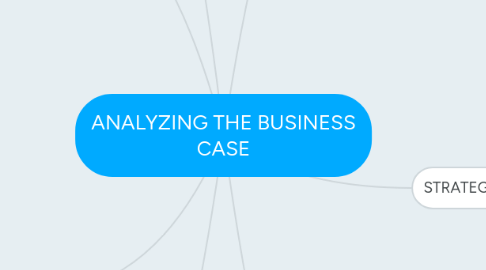
1. Computer-Aided Software Engineering (CASE)
1.1. the scientific application of a set of tools and methods to a software system which is meant to result in high quality, defect free, and maintainable software products.
1.2. Example
1.2.1. SYSTEM ANALYST - research the Visible Analyst CASE tool
2. Information Systems Projects
2.1. the coherent organization of the information required for an organization to execute projects successfully.
2.2. Main Reasons
2.2.1. Systems request
2.2.2. Improved service Support for new products and services
2.2.3. Better performance
2.3. Factors Affect
2.3.1. Internal Factors
2.3.1.1. Strategic plan
2.3.1.2. Top manager
2.3.1.3. User requests
2.3.2. External Factors
2.3.2.1. Technology
2.3.2.2. Suppliers
2.3.2.3. Customers
2.3.2.4. Competitors
2.3.2.5. The economy
2.3.2.6. Government
3. Overview of Feasibility
3.1. Operational Feasibility
3.1.1. proposed system will be used effectively after it has been developed
3.2. Technical Feasibility
3.2.1. technical resources needed to develop, purchase, install, or operate the system
3.3. Economic Feasibility
3.3.1. Total cost of ownership (TCO) - assessing costs,
3.3.2. Tangible benefits - decrease in expenses
3.3.3. Intangible benefits - Web site that improves a company's image
3.4. Schedule Feasibility
3.4.1. The first step in evaluating feasibility is to identify and weed out systems requests that are not feasible
4. Preliminary Investigation Overview
4.1. An initial investigation to clearly identify the nature and scope of the business opportunity or problem
4.2. Steps
4.2.1. Step 1: Understand the Problem or Opportunity
4.2.2. Step 2: Define the Project Scope and Constraints
4.2.3. Step 3: Perform Fact-Finding
4.2.4. Step 4: Analyze Project Usability, Cost, Benefit and Schedule Data
4.2.5. Step 5: Evaluate Feasibility
4.2.6. Step 6: Present Results and Recommendations to Management
5. Evaluation of Systems Requests
5.1. Systems review committee or a computer resources committee to evaluate systems requests
5.2. Systems Requests Forms
5.2.1. A properly designed form streamlines the request process and ensures consistency
5.2.2. Occasionally a situation will arise that requires an immediate response
5.3. Systems Review Committees
5.3.1. large companies use a systems review committee
5.3.2. smaller companies rely on one person
5.3.3. The goal is to evaluate the requests and set priorities
6. STRATEGIC PLANNING
6.1. Strategic Planning Overview (SWOT)
6.1.1. STRENGTHS
6.1.1.1. internal attributes and resources that support a successful outcome.
6.1.1.2. What do other companies see as your strengths?
6.1.1.3. What are the strengths of your company?
6.1.2. WEAKNESSES
6.1.2.1. internal attributes resources that work against a successful outcome.
6.1.2.2. What are some weaknesses seen by other companies?
6.1.2.3. Areas you should avoid?
6.1.3. OPPORTUNITIES
6.1.3.1. external factors the project can capitalize on or use to its advantage.
6.1.3.2. What are the best opportunities?
6.1.3.3. Interesting trends in your niche?
6.1.4. THREATS
6.1.4.1. external factors that could jeopardize the project.
6.1.4.2. What is your competition doing?
6.1.4.3. Is there any outstanding debt or large loan?
6.2. FROM STRATEGIC PLANS TO BUSINESS RESULTS
6.2.1. Mission Statement
6.2.2. Stakeholders
6.2.3. Goals
6.2.4. Objectives
6.3. the process of identifying long term organizational goals, strategies, and resources
7. Setting Priorities
7.1. Factors that Affect Priority
7.1.1. Will the proposed system reduce costs? Where? When? How? How much?
7.1.2. Will the system increase revenue for the company? Where? When? How? How much?
7.2. Discretionary Projects
7.2.1. management has a choice in implementing them
7.3. Nondiscretionary Projects
7.3.1. no choice exists
